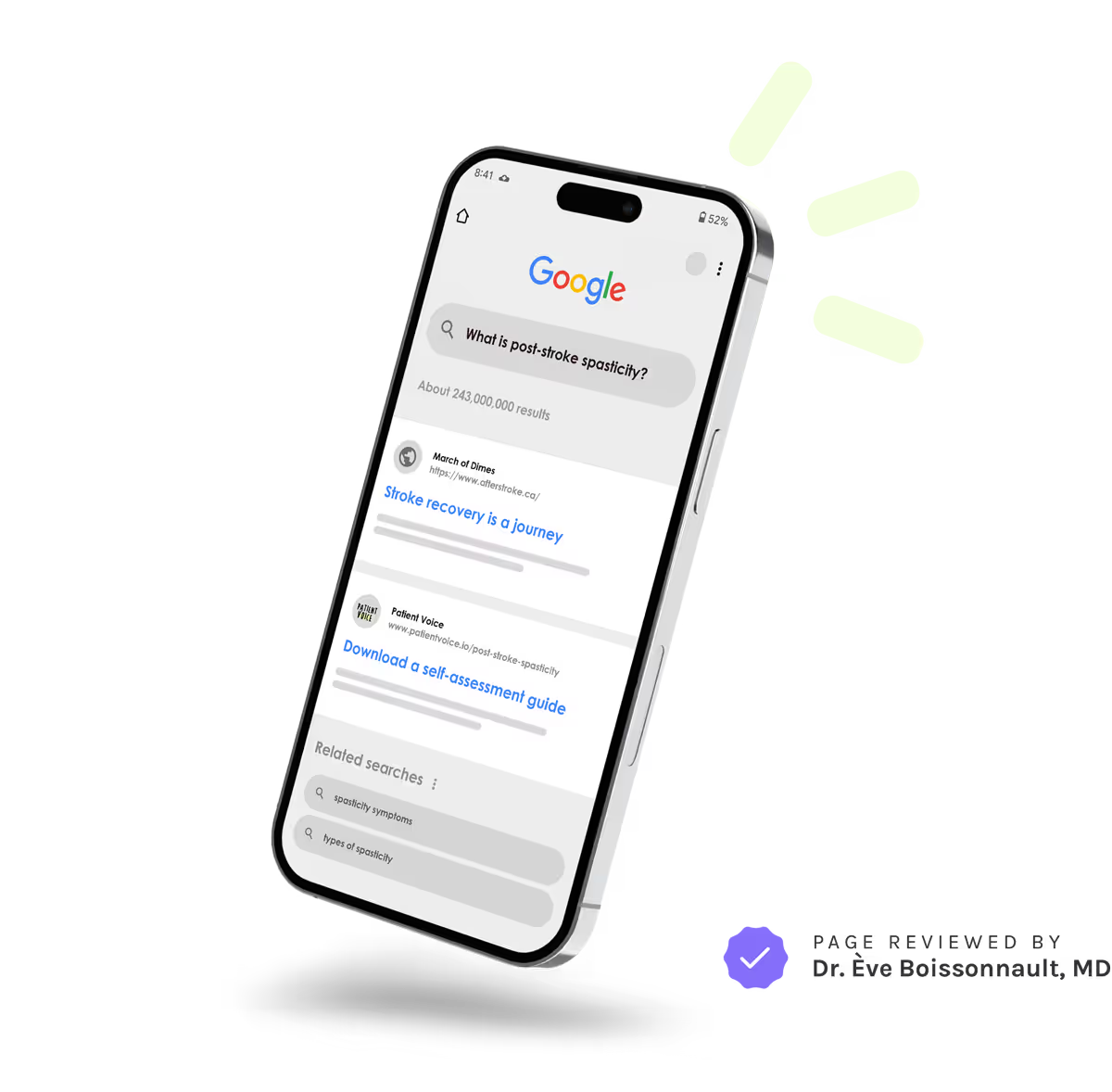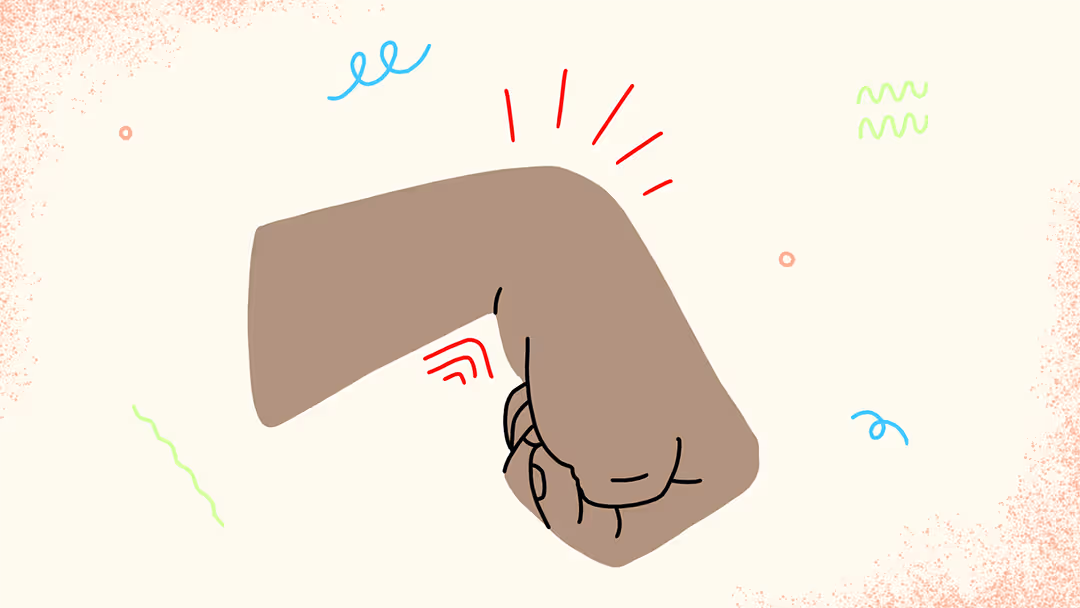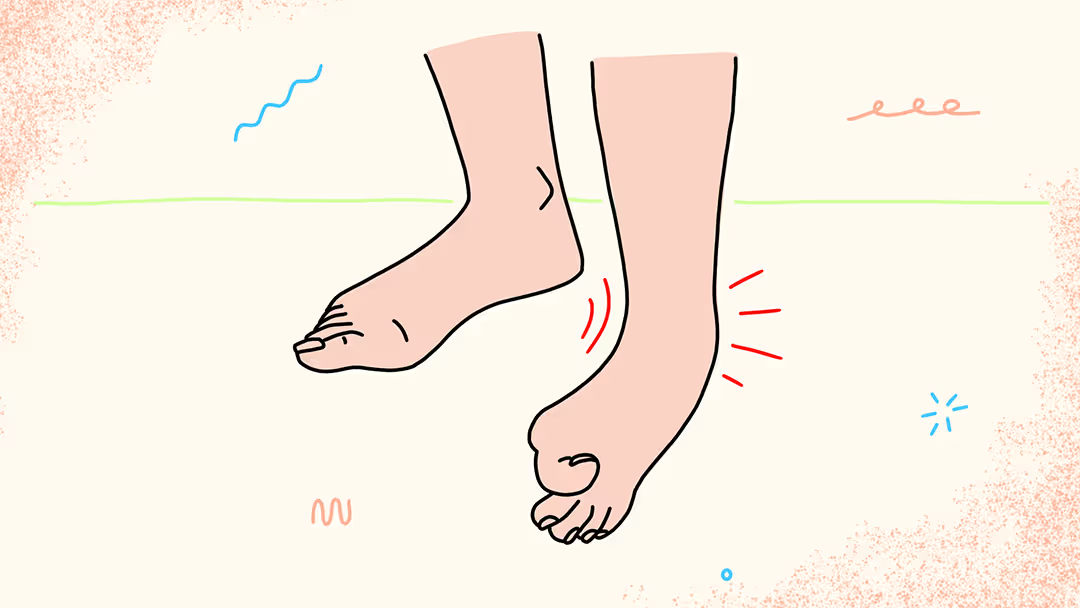Have you experienced a stroke?
Download Self-Assessment Guide







A combination of tools may be used as part of the care plan for people living with post-stroke spasticity, such as:
The symptoms of post-stroke spasticity may take days or even months to appear. As a result, it’s possible to overlook the correlation. Left untreated, however, spasticity can have a serious effect on function, comfort, and care delivery, and can lead to life-threatening complications.
If you or someone you love could be living with post-stroke spasticity, speak to your physician about a unique care plan. They will assess the amount of spasticity, its impact on the patient’s function, and treatment goals to recommend a custom management strategy.
The sooner you identify post-stroke spasticity, the sooner you can seek a customized care plan. Discuss the challenge of everyday activities and movement impacted by muscle stiffness with your doctor.

Dr. Ève Boissonnault is a neurorehabilitation specialist at CHUM and the Gingras-Lindsay Rehabilitation Institute in Montréal who treats patients with post-stroke spasticity in several clinics.